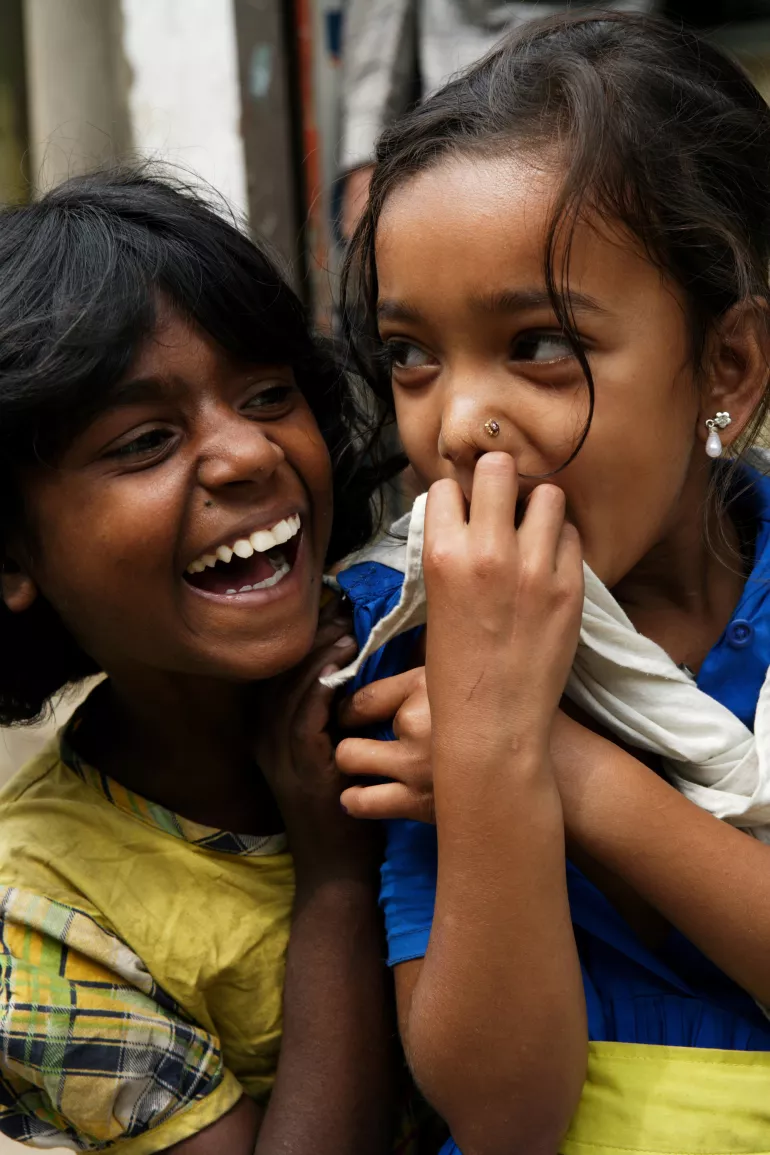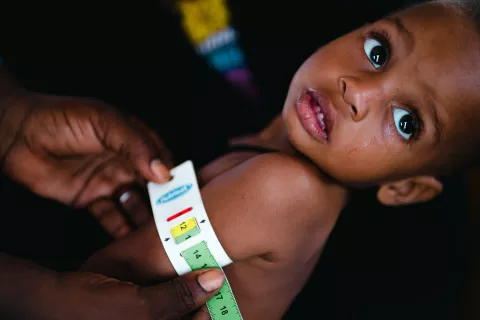Put children at heart of global agenda, UNICEF challenges Davos
UN children's agency sets out a Post 2015 agenda to end violence, preventable death and poverty among hardest-to-reach children

- Available in:
- 中文
- English
DAVOS, 20 January 2015 – On the eve of the World Economic Forum, UNICEF outlined an ambitious ‘Agenda for Every Child' that it says must drive the post-2015 sustainable development goals.
As leaders spanning all sectors gather in Davos, UNICEF is challenging the global community to make children a priority in the new Sustainable Development Goals, a roadmap for human progress over the next 15 years that will drive investment and action worldwide. The goals will be agreed to at the United Nations General Assembly in September.
“The world has made significant progress in the last 15 years, and yet millions of children remain marginalised,” said Yoka Brandt, UNICEF Deputy Executive Director. “This is a critical opportunity to reach the children who have been left behind. The decisions and the investments we make today will determine the future of this generation and those to come.”
The 'Agenda for Every Child' sets out seven priorities the organization says must be addressed in the new development goals.
- End violence against children. Almost 1 billion children under 15 suffer regular physical punishment, and a quarter of all girls aged 15–19 experience physical violence. While violence against children is often invisible, its impact on individual children and their societies is profound and far-reaching. Because violence against children is a universal problem, investing in protecting children from violence, abuse, neglect, and exploitation must be a global priority.
- Put ending child poverty at the core of global poverty eradication. Half of the world's extreme poor are children with nearly 570 million people under the age of 18 living below the international poverty line of $1.25 a day. Poverty in childhood is often the root cause of poverty in adulthood. Without access to health services, nutrition, water and sanitation, shelter and education, this cycle of poverty will continue.
- End preventable child and maternal deaths. Children in the poorest 20 per cent of households are twice as likely to die before their fifth birthday as those in the richest 20 per cent, and nearly three times as likely to be underweight or ill. Better health systems and better targeting of resources to reach the most vulnerable children and mothers will save lives, strengthen families, and support sustainable growth.
- Pay more attention to adolescence, the second decade of life. Gains realized in early childhood can either be consolidated or lost during adolescence, but adolescents are too often left out of planning and services. Investing in their learning and promoting healthy lifestyles, among other efforts, will help protect adolescents from disease and violence, and better prepare them for adulthood.
- Leverage the growing data revolution to support the rights of every child. Timely and credible data are crucial for identifying the children in greatest need and developing policies targeted to improve their lives. Data must be disaggregated to help us look beyond global and national averages and see the children who are being left behind.
- Improve investments in all children, especially the most vulnerable and marginalized. Sufficient funds must not only be allocated to education, water and sanitation, health care and social protection; to deliver the most sustainable results, they must also target the children and families in greatest need.
- Break the cycle of chronic crises that affect children. In 2014, 230 million children were living in conflict zones, and many more were affected by both man-made and natural disasters. The global response to humanitarian crises must focus not only on urgent short-term needs but also on building long-term resilience, helping children and their families to withstand future shocks, and ending the cycle of crises that they endure.
If significant gains made for children over the last 15 years are not to be lost, if growing nations are to thrive, if troubled regions are to become more stable, the world must make children its top priority.
“We must not only safeguard the world for this generation of children -- we must make sure they can grow up to enjoy it,” Brandt said. “We all have a role to play – political leaders, corporations and organizations, individuals, and children themselves – in driving change for every child and building a better world for everyone.”
UNICEF has established a social media hashtag #EVERYChild, inviting children and adults to join in supporting the Agenda for Every Child.
Download - UNICEF's An Agenda for #EVERYChild 2015
Media contacts
About UNICEF
UNICEF works in some of the world's toughest places, to reach the world's most disadvantaged children. Across 190 countries and territories, we work for every child, everywhere, to build a better world for everyone. For more information about UNICEF and its work for children visit www.unicef.org.
| Visit UNICEF China website: www.unicef.cn Follow us on Sina Weibo: http://weibo.com/unicefchina Tencent Weibo: http://t.qq.com/unicef Wechat: unicefchina |




